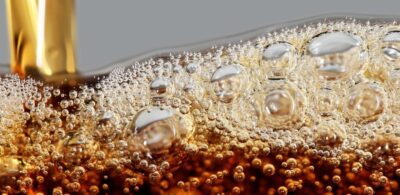True colours: the importance of getting colour right
15 August 2018
Since the recognition of colour as a registrable trade mark in 1955, there have been a limited number of Australian cases dealing with the subject. For many brand owners, colour is important as consumers often associate colour with a particular product or service. However, to date, few brands have been able to successfully obtain trade mark registrations (and hence a monopoly) over a particular colour. The inability of BP to register the colour ‘green’ on its own as a trade mark for its service stations or for Telstra to obtain a trade mark registration for the colour known as ‘knockout yellow’ for its Yellow Pages, demonstrates the high bar that brand owners face with colour marks.
Corrs has previously acted in the registering the colour orange in relation to Veuve Cliquot champagne, and has also been involved in other colour related trade mark matters including for Cadbury relating to the colour purple.
The recent Frucor v Coca-Cola decision[1] relating to the colour green for Frucor’s ‘V’ Energy drinks is another example of this. The case highlights the importance of getting the colour right - the first time round. We discuss what this case means for brand owners in Australia as the decision provides some useful guidance for an area of trade mark law left largely untouched by Australian cases.
In brief - the Frucor v Coca-Cola decision
The Federal Court recently upheld IP Australia’s decision in favour of Coca-Cola’s opposition to Frucor’s application to register its ‘V’ Green colour as a trade mark. The application was in relation to its ‘V’ Energy Drink product for energy drinks in class 32.
Coca-Cola opposed the application on the grounds that the mark was not capable of distinguishing the designated goods from the goods or services of another trader. Ultimately, Justice Yates refused the mark on the basis that Frucor’s application for the ‘V’ Green colour was “fatally flawed”. In any event, the Court also held that even if the colour application had been filed properly, Frucor had used the colour in a descriptive fashion, rather than in a distinguishing manner, and that ‘V’ Green had not functioned as a trade mark when assessed in its proper context and setting.
Be careful when submitting a colour mark electronically
The first difficulty Frucor had in registering the mark was the ambiguity in the application. To register its colour trade mark, Frucor submitted a swatch of the colour green it intended to register,[2] along with a short description of the mark[3] which described the colour as Pantone 376C.[4] The swatch Frucor electronically submitted with IP Australia was a coloured scanned image of the colour swatch submitted for Frucor’s New Zealand application. Unfortunately for Frucor, the green colour of the swatch submitted was substantially different and a much darker shade of green to Pantone 376C.
Frucor argued that the ambiguity between the swatch colour and the colour of Pantone 376C can be resolved by relying on the reference to the Pantone colour in the mark’s written description. Justice Yates disagreed and held that “[a] person inspecting the Register is entitled to act on the assumption that the trade mark applicant’s own depiction of colour in the representation accompanying the application is accurate”.
Thus, as part of its argument, Frucor sought to rely on the amendment provisions under the Act which allow for amendments where a “clerical error” or “obvious mistake” has occurred. Citing a previous case,[5] His Honour noted that where there is an obvious mistake, “it is the mistake which must be obvious and not the fact that it has been made… both the fact of the mistake and the correction necessary must be clear to the reader’s mind, and it is not enough if he merely appreciates the presence of a mistake…”.
Rejecting Frucor’s argument, Justice Yates considered that the trade mark application could not be amended as it would not be clear to a person who inspected the Register whether the error was in the description of the colour as Pantone 376C or in the swatch attached. His Honour commented that this is why the delegate accepted that Frucor’s application was “fatally flawed”.
A high standard to prove use of colour as a trade mark
Helpfully, the decision provides some guidance on how the case would have been decided even if the application could have been amended and hence whether Pantone 376C was capable of distinguishing the designated goods (‘V’ Energy Drinks) from the goods of another person.
Frucor made a number of arguments, including that:
- ‘V’ Green is a dominant feature consumers would readily appreciate as indicating the origin of the goods;
- ‘V’ Green was not being used for any other purpose, or to convey another meaning;
- the energy drinks were displayed in a way that calls attention to the colour mark as a badge of origin;
- ‘V’ Green had been used dominantly on all marketing and promotional materials;
- Frucor had branded the energy drinks with ‘V’ Green with the intention that consumers will identify the colour with the energy drinks; and
- the survey evidence showed that customers recognise ‘V’ Green as a badge of origin for V energy drinks.
Ultimately, while Yates J found that Frucor’s use of ‘V’ Green was substantial, consistent and conspicuous, His Honour was not persuaded that it functioned as a trade mark in the proper context of the use.
- First, His Honour found that there was often a consistent presence and dominating display of the distinctive ‘V’ logo that accompanied the energy drinks, promotional and marketing material.
- Secondly, His Honour found that ‘V’ Energy Drinks were more properly characterised in the context of non-alcoholic beverages, a category also comprising of soft drinks, sports drinks, fruit juice drinks and bottled water. In this expanded category, Yates J found that colour is often used to denote product flavour, or another characteristic such as ‘sugar-free’. Indeed, Frucor’s own use mirrored this approach, with green denoting the core product, silver to denote ‘sugar-free’, red to indicate berry flavouring, and yellow to denote the lemon flavoured variant.
- His Honour stated that “this is clearly how Frucor intended to use colour, and clearly how it perceived and anticipated that consumers would respond to that use. Although Frucor’s use of ‘V’ Green was pervasive and no doubt fundamental to its whole marketing strategy, it was, nonetheless, reminiscent of its core product. In this way, Frucor’s use of the V Green was essentially descriptive, not distinctive in the trade mark sense.”
Take home points for brand owners
- Internal marketing or branding references are not enough. Frucor led evidence that Pantone 376C was internally referred to as ‘V’ Green, on internal branding documents, graphics, and marketing briefs. Frucor had also conducted several qualitative research projects to understand the relationship between ‘V’ Green and consumer recognition. The case shows that internal references to a colour may not be enough – what matters is the use of the colour and ensuring the colour is used to distinguish goods, not merely in a descriptive or ornamental fashion.
- Take care when submitting an application that hinges on colour. As was a crucial factor to this case, the processing of a coloured swatch can substantially affect its appearance. Instead of physically scanning a colour swatch, it may be prudent to submit a Pantone reference and corresponding electronic Pantone swatch, rather than scanning a physical swatch. Alternatively, IP Australia accepts physical trade mark applications.
- Beware of survey evidence. Again, this case highlights the potential issues with relying on survey evidence. Numerous criticisms of the survey evidence adduced by Frucor were made by Coca-Cola and Yates J about the reliability of the studies, noting that evidence of association of a colour with a particular product does not automatically indicate that the colour has functioned as a trade mark. While survey evidence can provide an insight into consumer behaviour and attitudes, care needs to be taken when seeking to rely on such evidence in trade mark cases.
[1] Frucor Beverages Limited v The Coca-Cola Company [2018] FCA 993
[2] Trade Marks Regulations 1995 (Cth) reg 4.2(1)(b)
[3] Trade Marks Regulations 1995 (Cth) reg 4.3(7)
[4] The Pantone Matching System allows a person to match and reproduce a colour using a standardised reference system, to ensure that a colour matches another without the need for a direct comparison.
[5] General Tire & Rubber Company (Frost’s) Patent [1972] RPC 271
Authors

Partner
Tags
This publication is introductory in nature. Its content is current at the date of publication. It does not constitute legal advice and should not be relied upon as such. You should always obtain legal advice based on your specific circumstances before taking any action relating to matters covered by this publication. Some information may have been obtained from external sources, and we cannot guarantee the accuracy or currency of any such information.



